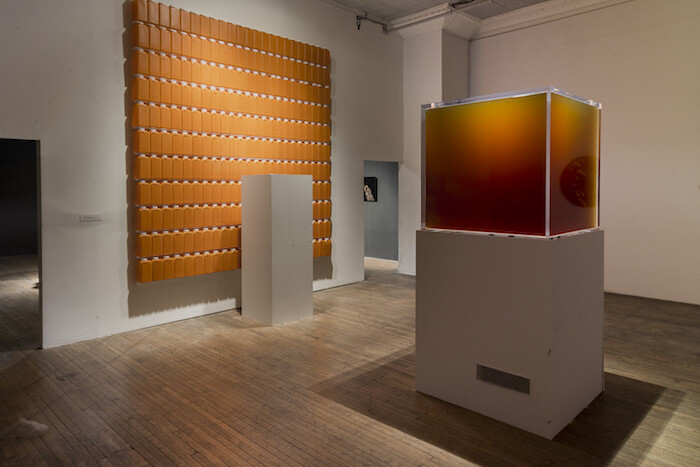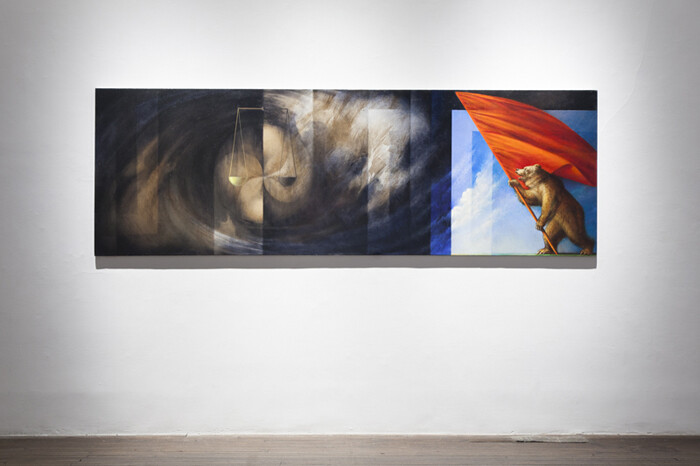Categories
Subjects
Authors
Artists
Venues
Locations
Calendar
Filter
Done
October 17, 2017 – Review
Cassils’s “Monumental”
Wendy Vogel

The practice of Canadian-born, Los Angeles-based artist Cassils expands upon—and queers—a feminist performance-art tradition, molding their transgender masculine physique through rigorous fitness regimens and durational actions. Though in “Monumental,” Cassils’s current New York exhibition, abstraction has entered the artist’s repertoire. Cassils grapples with their political desire to represent transgender lives and the media’s desire to spectacularize transgender bodies. The most traditional monument on display is Resilience of the 20% (2016), a bronze cast of a one-ton block of clay that Cassils attacked during a previous live performance in the Pennsylvania Academy of Fine Arts’s casting hall. The sculpture, which reveals impressions of Cassils’s hands, feet, and limbs, is spotlit at the center of a room painted a sober, dark gray.
A suite of five photographs depicts the artist’s creation of Resilience of the 20%, punching and kicking their way through a ton of clay in total darkness. The only illumination comes from the hard flash of the cantilevered camera, capturing the artist and wide-eyed audience, as well as a cast of Michelangelo’s David (1501-4) behind them. Earlier this year, Cassils led a site-specific performance with Resilience of the 20% in Omaha, Nebraska, called Monument Push. A series of local activists pushed …
May 18, 2015 – Review
Vitaly Komar’s “Allegories of Justice”
Kim Levin

Vitaly Komar, formerly half of the illustrious team Komar & Melamid, which split in 2003, continues to paint in a style he has dubbed “New Symbolism.” For more than a decade, his virtuosic paintings of the proverbial scales of justice, tiny birds of truth, hulking Russian bears waving red flags, and circular serpents biting their own tails have been going through their allegorical paces, wrapping religion in history and spirituality in cosmic swirls. Melamid, meanwhile, has kept a lower profile.
Komar’s recent exhibition at New York’s Ronald Feldman Fine Arts, “Allegories of Justice,” which includes a few earlier works by the former team, raises a number of questions. What happens when an artist duo splits up, as Komar & Melamid did? What happens when the context of any artist’s production—in this case conceptual sociopolitical work satirically skewering both Soviet ideology and American consumerism—vanishes into thin air, as the Soviet system did, leaving them and other Soviet artists without a framework? And how do they continue to make art in the context of the internal void of a suddenly collapsed culture? Also, in the case of Komar & Melamid—who left Moscow in 1977 and moved to New York the next year—how was …